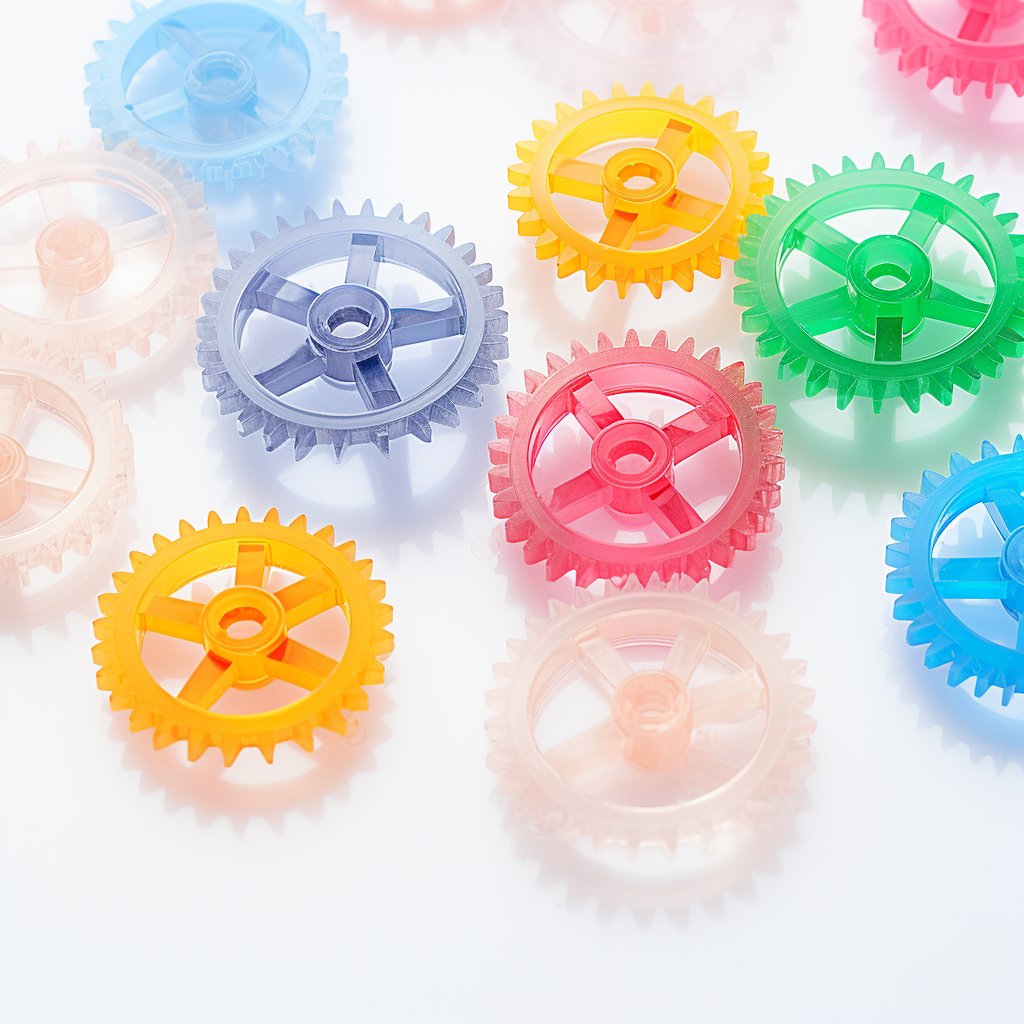Polyamide, commonly known as nylon, is a thermoplastic polymer that is widely used in the plastics industry. It is a highly versatile material with many applications, including consumer products, automotive parts, electrical components, and textiles.
Polyamide was first developed in the 1930s by a group of chemists led by Wallace Carothers at DuPont. The material was initially used as a synthetic replacement for silk to produce women’s stockings. Over time, polyamide has become one of the most widely used thermoplastics in the world, with a range of industrial and consumer applications.
Polyamide (PA), commonly known as nylon, is a versatile and widely used polymer that has been around for over 80 years. From clothing to car parts, PA is used in a range of industrial and consumer applications thanks to its excellent mechanical properties, durability, and versatility. In recent years, there has been a growing interest in sustainable materials, and PA is no exception. In this article, we’ll take a closer look at PA, its properties, industrial usage, and applications, as well as its advantages and disadvantages compared to other plastics. We’ll also explore the increasingly important topic of PA recycling, including its process, environmental impact, and future market prospects.

What Nylon?:
Polyamide, or Nylon, is a versatile and durable thermoplastic with a wide range of applications in the plastics industry. It has excellent mechanical and thermal properties, making it an ideal choice for use in various products, from consumer goods to industrial parts.
Material Properties:
Polyamide is a highly durable and flexible thermoplastic with excellent mechanical and thermal properties. It has a high melting point, which makes it resistant to heat, and it is also resistant to chemicals and abrasion. Polyamide is also lightweight, making it an excellent choice for use in products that require strength without added weight. Polyamide is also known for its superior tensile strength, impact resistance, and elasticity.

Industrial Usage:
Polyamide is widely used in the plastics industry, with applications in automotive parts, electrical components, and textiles. In the automotive sector, polyamide is used to manufacture parts such as air intake manifolds, engine covers, and radiator end tanks. It is also used to produce electrical connectors, cable insulation, and switch housings. In the textile industry, polyamide is also used in clothing, carpet fibres, and upholstery.
Application Areas:
Polyamide has a range of application areas due to its unique properties. It is commonly used to produce consumer goods such as sports equipment, toothbrushes, and kitchen utensils. Additionally, polyamide is used in the production of medical devices, such as surgical sutures, due to its biocompatibility and chemical resistance. Polyamide is also commonly used in the production of industrial parts, such as gears and bearings, due to its excellent mechanical properties.
Consumer Product Examples:
Polyamide is widely used in the production of consumer products. Some examples include:
- Sports equipment: Polyamide is commonly used to produce sports equipment such as tennis rackets, skis, and snowboards due to its strength and durability.
- Toothbrushes: The bristles on toothbrushes are often made from polyamide due to its ability to withstand repeated use and exposure to water.
- Kitchen utensils: Polyamide is used in producing kitchen utensils such as spatulas and spoons due to its heat resistance and durability.
Advantages and Disadvantages of using nylon:
One of the primary advantages of polyamide is its excellent mechanical and thermal properties, which make it a highly versatile material. It also has good chemical and abrasion resistance, making it suitable for use in a range of industrial and consumer applications. However, one disadvantage of polyamide is its relatively high production cost compared to other thermoplastics, such as polyethene and polypropylene. Additionally, it can be challenging to recycle, which can contribute to environmental concerns.
Compared to Alternative Plastics:
Polyamide is often compared to other thermoplastics such as polyethene, polypropylene, and polycarbonate. Compared to polyethene and polypropylene, polyamide has higher mechanical and thermal properties, making it a better choice for products that require strength and durability. However, it is also more expensive to produce than these thermoplastics. Compared to polycarbonate, polyamide has a lower impact strength but is more resistant to abrasion and chemicals.
Recycling nylon:
Recycling polyamide can be difficult due to its complex molecular structure, which can make it difficult to break down and process. However, there are several methods of recycling polyamide, including mechanical recycling and chemical recycling. Mechanical recycling involves shredding and melting the material to create new products, while chemical recycling involves breaking down the material into its constituent components to create new polymer products. The recycling of polyamide is becoming increasingly important as the demand for sustainable materials grows.
Polyamide (PA/Nylon) is a thermoplastic polymer that can be recycled using various methods, including mechanical and chemical recycling. The recycling of PA/Nylon is becoming increasingly important as the demand for sustainable materials grows, and there is a need to reduce waste and greenhouse gas emissions.
Mechanical Recycling Process:
Mechanical recycling involves shredding the PA/Nylon waste and melting it to create new products. The process involves the following steps:
- Sorting: PA/Nylon waste is sorted based on type and colour.
- Shredding: The sorted PA/Nylon waste is shredded into small pieces.
- Melting: The shredded waste is then melted and extruded into pellets.
- Manufacturing: The pellets are then used to create new products.
Advantages of Mechanical Recycling:
Mechanical recycling of PA/Nylon has several advantages, including:
- Reduced Energy Consumption: The recycling process requires less energy than virgin PA/Nylon production.
- Reduced Landfill Waste: Mechanical recycling reduces the amount of PA/Nylon waste in landfills.
- Cost-Effective: Using recycled PA/Nylon can reduce production costs, making it an attractive alternative to virgin PA/Nylon.
Disadvantages of Mechanical Recycling:
Mechanical recycling of PA/Nylon also has some disadvantages, including:
- Reduced Quality: The quality of recycled PA/Nylon is lower than that of virgin PA/Nylon due to degradation during the recycling process.
- Limited Recycling Options: PA/Nylon cannot be recycled indefinitely, and the quality of the recycled material decreases with each cycle.
Chemical Recycling Process:
Chemical recycling involves breaking down the PA/Nylon waste into its constituent components to create new polymer products. The process involves the following steps:
- Depolymerisation: The PA/Nylon waste is broken down into its constituent monomers using heat and chemicals.
- Purification: The monomers are purified to remove any impurities.
- Polymerisation: The purified monomers are then polymerised to create new PA/Nylon.
Advantages of Chemical Recycling:
Chemical recycling of PA/Nylon has several advantages, including:
- High-Quality Material: The recycled material produced through chemical recycling is of high quality and can be used to produce new products.
- Reduced Environmental Impact: Chemical recycling reduces the environmental impact of PA/Nylon production by reducing greenhouse gas emissions and waste.
Disadvantages of Chemical Recycling:
Chemical recycling of PA/Nylon also has some disadvantages, including:
- High Cost: Chemical recycling is currently more expensive than mechanical recycling and producing virgin PA/Nylon.
- Technical Challenges: The depolymerisation process can be technically challenging and may require additional research and development.
Environmental and Global Impact:
The recycling of PA/Nylon has a positive environmental impact by reducing waste and greenhouse gas emissions. The use of recycled PA/Nylon also reduces the demand for virgin PA/Nylon, reducing the environmental impact of production. However, the recycling of PA/Nylon can also negatively impact the environment, such as by releasing pollutants during the recycling process. To mitigate these impacts, it is important to ensure that PA/Nylon waste is properly sorted and recycled using the most sustainable methods.
In terms of global impact, the demand for recycled PA/Nylon is expected to increase as the need for sustainable materials grows. This is particularly important in regions with limited resources and high levels of waste, where recycling can help reduce production’s environmental impact and improve resource efficiency.
Market Price Developments:
The market price of polyamide can be influenced by a range of factors, including supply and demand, raw material costs, and market competition. In recent years, the market price of polyamide has been volatile due to fluctuations in the cost of raw materials and changes in market demand. However, the long-term outlook for polyamide remains positive, with continued growth expected in the automotive, electrical, and textile industries.
Future Market Prognosis:
The demand for polyamide is expected to grow in the coming years, driven by increasing demand for lightweight and durable materials in various industries. The automotive industry is expected to remain a key market for polyamide, with growing demand for lightweight and fuel-efficient vehicles. The electrical and electronics industry is also expected to be a significant market for polyamide, with increasing demand for high-performance components. In the textile industry, polyamide is expected to continue to be used in the production of clothing and textiles due to its excellent properties. However, as the demand for sustainable materials grows, there will be increasing pressure to improve the recyclability of polyamide and reduce its environmental impact.
How nylon has become a mainstay plastic
Polyamide (PA) is a versatile and widely used polymer that offers excellent mechanical properties and durability, making it a popular choice in a range of industrial and consumer applications. However, as the demand for sustainable materials grows, there is an increasing need for PA recycling and waste management solutions to minimise its environmental impact. With advancements in recycling technologies and the growing focus on sustainability, the future looks promising for PA and its role in the circular economy.







